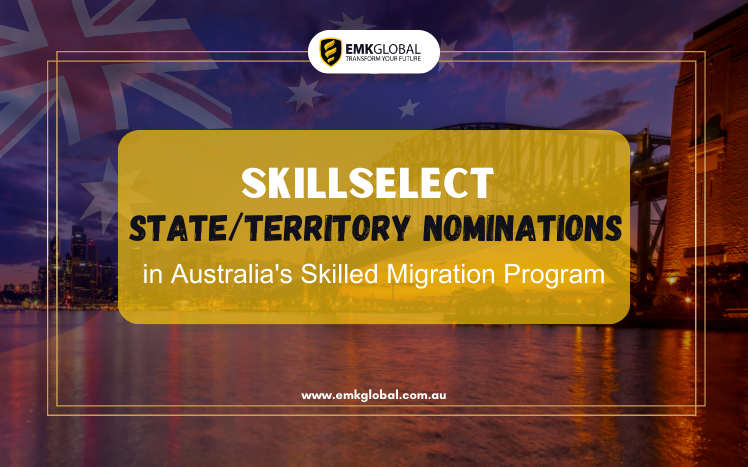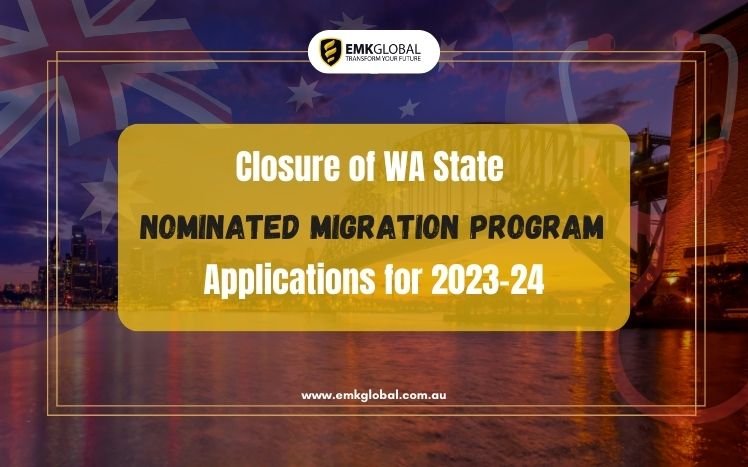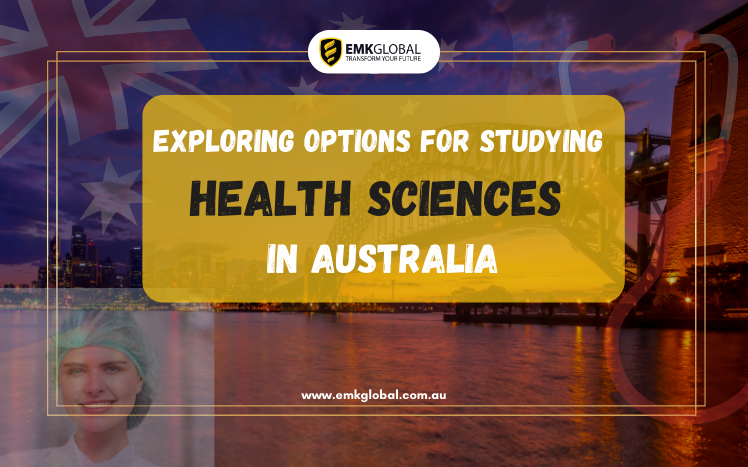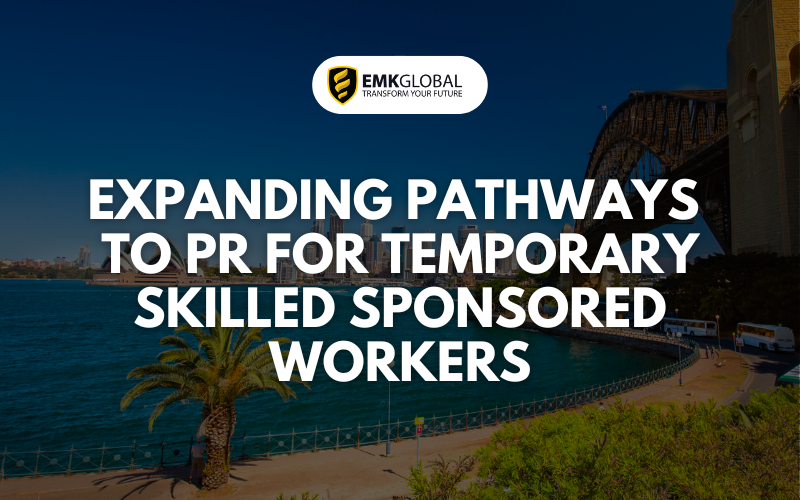A new migration strategy has been released by the Australian Government on 11 Dec 2023.
As part of this strategy, the government aims to help return migration to near pre-pandemic levels by next financial year, and introduce a number of new commitments to improved the overall outcomes of the migration program.
New Commitments to achieve Migration Strategy
1. New Skills in Demand visa
The Government will introduce a new 4-year temporary skilled worker visa—the Skills in Demand visa. The simpler and better targeted Skills in Demand visa will replace the complex single employer sponsored Temporary Skill Shortage (TSS) visa.
Key Features of the new visa will include:
Guaranteed pathways to permanent residence: Skills in Demand visa holders will have a pathway to permanent residence. Periods of employment with any approved employer will count towards permanent residence requirements. Temporary skilled migrants will also be enabled to apply for permanent residence through self-nominated independent pathways, for example, through a reformed points test.
More time to find a new job: If the employment relationship with a sponsor ceases, visa holders will have 180 days to find another sponsor and can work during this period.
Trailing employer fees: The Government will explore a model for employers to pay trailing charges and fees (e.g. monthly or quarterly) to make hiring a new migrant less onerous.
Public register of sponsors to assist mobility: A public register of approved sponsors, including the number of migrants sponsored and their occupations, will be developed to assist migrants wishing to find a new sponsor.
2. New Specialist Skills Pathway
The Specialist Skills Pathway is the first pathway within the Skills in Demand visa and will be available to applicants who meet the general eligibility criteria (for example, be nominated by an approved employer, meet the health and character requirements).
Key requirements are:
- work in any occupation except trades workers, machinery operators and drivers, and labourers
- 💰earning at least $135,000 (the Specialist Skills Threshold) and no less than Australian workers in the same occupation. The threshold income corresponds with the 90th percentile earnings for all workers in Australia
Processing Time: The Government will commit to a service standard of 7 days median visa processing time for workers in the Specialist Skills Pathway.
3. New Core Skills Pathway
The Core Skills Pathway is the second pathway in the new Skills in Demand visa and most temporary skilled migrants will come through the Core Skills Pathway.
Key requirements are:
- occupation is on a new Core Skills Occupation List, which relates to occupations identified by Jobs and Skills Australia as being in shortage or where Australia has committed to providing access to our labour market in relation to that occupation through international trade agreements
- paid a salary at or above the TSMIT (to be retitled the Core Skills Threshold, when the new system is implemented), or the relevant average market salary where it is above the TSMIT.
4. Legislate indexation of income thresholds to maintain system integrity
The Government will index the new Core Skills and Specialist Skills Thresholds in line with annual movements in Average Weekly Ordinary Time Earnings. This indexation requirement will be specified in legislation to provide clarity and predictability for migrants and employers, as recommended in the Migration Review.
5. Streamline labour market testing requirements to reduce complexity
The Government will immediately move to streamline labour market testing by removing the requirement to advertise positions through Workforce Australia and will subsequently increase the validity period from 4 to 6 months. As Jobs and Skills Australia’s role further matures, the Government will consider moving away from employer conducted labour market testing towards mechanisms for robust and genuine independent verification of labour market need.
6. Establish a best practice service level agreement for visa processing times and a modernised accreditation pathway to better compete for talent
The Government will establish a median service standard of 21 days for the new Skills in Demand visa and 7 days for the Specialist Skills Pathway.
The Government will aim to modernise the accreditation pathway, which will further help approved sponsors gain streamlined access to the migrant workers they need. These requirements for becoming an accredited sponsor favour large and established businesses, and disadvantage smaller businesses, especially start-ups, acting as a brake on innovation. The Government will open the accredited sponsor program to start-ups that have received venture capital from a registered venture capital fund. This will be balanced by strengthening integrity in the approved sponsor application process.
7. Reformed Points Test
The current points test used to select independent skilled migrants is complex and does not effectively attract migrants best able to contribute to Australia’s long-term prosperity. It includes factors which are likely to be poor predictors of success in the labour market, such as regional study or community language skills. Australia’s current points test also does not effectively capture age and skill trade-offs, despite both being strong predictors of migrant success and fiscal impact.
Secondary Applicant Skills: Grattan Institute has suggested that more consideration should be given to the skills of secondary applicants. Points offered via the test for different migrant characteristics should be re-calibrated to reflect the contribution those characteristics make to migrants’ contribution to the welfare of the Australian community.
Better Options for Graduate Working in Skilled Jobs: The reformed points test will also seek to better reward skill level over perseverance, which will mean for example, faster pathways for international student graduates who are working in skilled jobs in the labour market, but fewer pathways for graduates not working in skilled jobs.
Age, Experience and Education Re-Balancing: The Treasury estimates that a skilled migrant arriving at the age of 45 would need a starting salary of $160,000 to match the lifetime fiscal impact of a skilled migrant arriving at age 30 with a starting salary of $100,000. Balancing this out, some older migrants may have achieved high level skills which can deliver major economic benefits to the nation over their remaining working career. This might be better reflected in the reformed points test.
The Government will publish a discussion paper later in 2023 outlining the proposed approach to the redesign of the points test and will further consult on proposed changes. This will also consider impacts to State/Territory nominated and Regional visas, given these are points-tested visa programs.
8. Increased English Language Requirements for International Students
In early 2024, the Government will increase English language requirements for the Student and Temporary Graduate visas:
- the test score required for a Temporary Graduate visa will increase from an International English Language Testing System (IELTS) score (or equivalent) of 6.0 to 6.5
- the test score required for a Student visa will increase from IELTS (or equivalent) 5.5 to 6.0
- the test score required for students undertaking an English Language Intensive Course for Overseas Students (ELICOS) before their main course of study will increase from IELTS (or equivalent) 4.5 to 5.0
- the test score required for students undertaking university foundation or pathway programs that deliver reputable English language training will be IELTS (or equivalent) 5.5.
9. New Genuine Student Test
The government will replace the existing Genuine Temporary Entrant requirement to acknowledge that post-study temporary migration (and beyond) pathways are available for those who may be eligible. At the same time, the new Genuine Student test will be clear that the vast majority of international students in Australia will return home.
Two new Ministerial Directions will be introduced to support the integrity of processing in the student visa caseload.
The first Ministerial Direction will outline key areas of consideration to support decision makers, including the circumstances of the applicant, such as their academic or career progression and the usefulness of the intended study to their future career prospects. The Direction will be clear in setting the expectations of students who come to complete study in Australia. Those who do not meet those requirements will not be granted a student visa.
The second Ministerial Direction will focus on the prioritisation of processing the visa caseload. A processing priority Ministerial Direction will prioritise student visa applications based on risk-level of providers and will come into effect by the end of 2023, in time to support processing for the 2023–24 student visa peak season. Higher risk providers will experience slower processing times as visa decision makers consider the integrity of a provider, as well as the individual student applicants.
10. Improved DHA Student Visa Integrity unit to reduce misuse of Australia’s student visa system
To complement the introduction of the new Genuine Student test, the Government will invest $19 million to significantly bolster the student visa integrity unit in Home Affairs. This investment will allow for greater scrutiny at the point-of application to better identify non-genuine students and help build new analytical capabilities to identify students, facilitators and agents who misuse student visas post-arrival. This strengthened student visa integrity unit will also help support ASQA’s new integrity unit through cross-agency compliance activities.
11. Strengthen requirements for international education providers
The Government will act to assist regulators as they address unscrupulous provider behaviour through further legislative change. The Government will engage further with the sector in the development of its response and any implementation of these or similar measures.
This work will be complemented by the development of an International Education Strategic Framework. Working with the sector and the Council for International Education, the Government will ensure Australia’s valuable international education sector continues to prosper in delivering high quality education to genuine students.
12. Restrict onshore visa hopping
Australia’s student visa program has a proud history of attracting talented students from around the world. More recently, it has been used by some international students and other temporary visa holders to visa hop from visa to visa to extend their stay in Australia when they have little prospect of becoming permanent residents. This has contributed to a growing cohort of ‘permanently temporary’ former international students living in Australia.
Using the new Genuine Student test, the Government will require any eligible students applying inside Australia to provide evidence in their application to demonstrate that any subsequent course is furthering their career or academic aspirations, such as undertaking a practical VET course to complement their degree, or undertaking research to gain a Masters qualification in their field of expertise. Prospective international students who cannot demonstrate this sensible course progression from their initial course of study will not meet the Genuine Student test.
This change, combined with future proposed changes to the points test and other skilled visa settings, helps the graduates working in skilled jobs stay permanently, while reducing the number of graduates that are left in limbo and that stay despite having fewer prospects of permanent residence.
13. Strengthen and simplify Temporary Graduate visas
The government will introduce the following changes to Temporary Graduate Visas:
Shorter post-study work rights: The duration of an initial TGV will be shorter. The extension of post-study work rights will no longer be available. Only applicants who studied in a regional area will be eligible for an extension. TGV length under new settings will be:
Initial TGV
- 2 years for Bachelor Degree
- 2 years Masters by coursework
- 3 years for Masters by research
- 3 years for PhD
Eligibility for a second TGV
- 1–2 years for study in a regional area (dependent on location)
Age Limitation: Maximum eligible age for a TGV will be reduced to 35.
Limited Graduate Visa Products: TGV streams will be re-named as Post-higher Education Work and Post-Vocational Education Work streams to be more descriptive for the relevant applicants. The Replacement Stream of the TGV and the subclass 476 visa will be abolished.
Clearer visa processing times: TGV processing times for the Post-Higher Education Work Stream will be backed by a 21-day service standard.
Clearer post graduate visa pathways: The work experience requirement for a Temporary Skills Shortage visa (and future Skills in Demand visa) will be changed to give TGV holders more opportunity to move on to a skilled visa. Proposed reforms to the points test will also give graduates working in skilled jobs faster pathways to permanent residency.
14. Develop a public register of approved sponsors to enable monitoring and oversight
The Government will develop a public register of employers who are approved to sponsor temporary migrant workers, to encourage public transparency, monitoring and oversight, and promote productivity-enhancing worker mobility. This will help migrant workers find new sponsors and give migrant workers a resource to check that a sponsoring employer is legitimate.
15. Longer Term Migration Planning Levels
The multi-year planning model, in collaboration with states will extend the planning horizon of the permanent Migration Program beyond its current 12 months and enable a better planning effort to meet the strategic, structural and long-term challenges that we face as nation and in our cities and regions.
16. Improved Skill Assessments and Recognition Procedures
There are currently 39 skilled migration assessing authorities approved by the Minister for Skills and Training to undertake skills assessments for 650 occupations. The government will implement new standards for skilled migration assessing authorities to optimise outcomes for Australian employers and migrants
17. Priority Processing for Regional Visas
The Government will immediately alter Ministerial Direction 100 to make visa processing for migrants sponsored by employers in regional Australia its top visa processing priority. This will help further streamline visa processing for businesses located in regional Australia who are sponsoring skilled workers.
18. Abolish unnecessary and duplicative visas to simplify the visa system
To start reducing the administrative burden, the Government will initially reduce the number of visa subclasses by 20, for example by merging offshore and onshore visa classes such as the subclass 101 Child visa (offshore) and the subclass 802 Child visa (onshore) into a single Child visa. We will close some temporary visas that are no longer receiving new applications and merge others that essentially perform the same purpose.
19. Improve Administration and Technology
Investment of $84m to reduce the visa backlog and visa processing times and Investment of almost $27.8m to improve the visa ICT system has been undertaken.
Read the full report here.
Source: Department of Home Affairs















